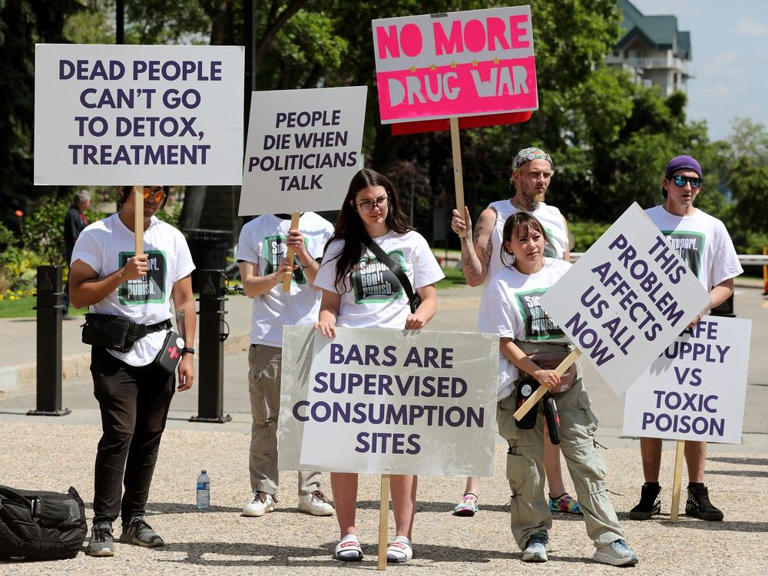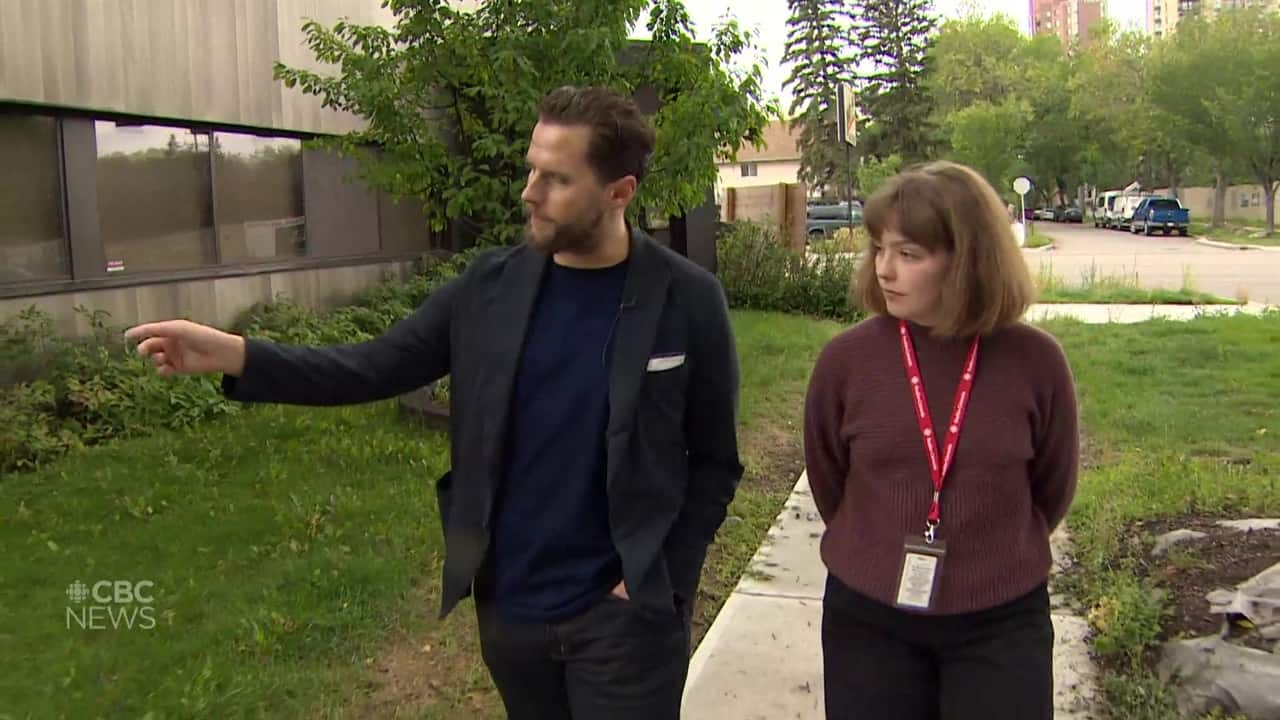Story by Conor Barker, Assistant Professor, Department of Psychology & Faculty of Education, Mount Saint Vincent University
Patrick Richards, PhD Candidate, College of Education, University of Saskatchewan
Saskatchewan’s Premier Scott Moe recently shuffled his cabinet. Among the ministers changing portfolios is Dustin Duncan, who is being moved from education to overseeing the province’s Public Service Commission.
The changes came shortly after Duncan introduced new policies that require parental consent for students to participate in sexual health classes and to make name or pronoun changes if they are under the age of 16.
Duncan has not provided information regarding what research or legal precedent was used in formulating this policy. Several groups have spoken against the policy, including the trans community, Saskatchewan Teachers Federation and Saskatchewan School Boards Association.
The Federation of Sovereign Indigenous Nations (FSIN) has called for the policy to be repealed and the ministerial directive is currently under review by the Saskatchewan Advocate for Children and Youth, who has indicated concern that the rights of children were not sufficiently considered.
A similar policy was also introduced in New Brunswick and similar policies are being considered in Ontario and Manitoba, sparking a contentious debate about the rights of children, the rights of parents and the role of schools and government in society.
While elected officials play a crucial role in shaping policies that align with the values of their constituents, they must also consider relevant research and legal context for a balanced approach. Otherwise, they risk destabilising classrooms and harming students.
Importance of inclusion in schools
It has been widely acknowledged that gender-variant children, including those who identify as trans or non-binary, are more likely to experience anxiety, depression, social isolation and even suicide. Creating supportive environments that acknowledge their chosen names and pronouns has been shown to mitigate these risks.
Many schools across Canada have implemented policies to address gender identity issues among students, aiming for a more inclusive educational environment. Parents and families are most often involved in the care of gender-variant youth in schools.
However, in some cases parents are not involved when it has been identified that informing parents presents real risks to the child, including abuse or abandonment. There is a necessity of policy to address this reality that places children in danger.
Parental rights
Parental rights, often advocated by the religious right in North America, historically influenced areas like homeschooling. The parental rights movement is based on the concept that children are property of the parents with limited rights. The movement has found resurgence in the United States and has started to become more influential in Canada.
Historically, groups who oppose social progress have used parental rights as a guise, whether it was about segregated schools, sexual health education or gay rights. They would often suggest that schools exclude parents and harm children. In truth, schools and school policy promote parent engagement for improved child outcomes.
Read more: 'Parental rights' lobby puts trans and queer kids at risk
Saskatchewan has a strong tradition of parent-school co-operation in education. Small school districts were a feature of the province. They kept decision-making local and thus more accessible to parents.
Nevertheless, parent councils have been a more recent legal entity in Saskatchewan when they were legislated in the 1990s. Parents in these councils often serve the role as community liaison. Given the strong collaboration between schools and parents, we question the necessity of provincial parental consent policy. Parent involvement is already promoted at the community, local school division, school and classroom levels.
Rights of children
Recently, the rights of children have gained prominence, particularly in the context of disputes between parents and mandatory vaccinations in schools. In Canada, children are protected by the Charter of Rights and Freedoms and the country is a signatory to the United Nations Convention on the Rights of the Child.
Several key articles from the convention are relevant to this discussion, including rights for non-discrimination, rights for life, survival and development, rights to express their views, rights to identity, nationality and family relations and the best interests of the child principle.
It’s important to note that Article 5 of the convention — which stipulates that the state should respect parents’ responsibilities, rights and duties — should also be considered. The convention does not confer sole determination of a child’s best interests on parents, nor does it exclude them from being seen as discriminatory actors. Rather, it places the onus on the state to safeguard these rights.
The state bears the responsibility of protecting children from discrimination and ensuring their well-being, opinions and growth. Notably, even though specific terms like “trans” may not be explicitly mentioned, Canada does include gender within the scope of non-discrimination. The convention underscores that a child has the right to preserve their identity and name, distinct from the parent’s authority.
In Saskatchewan, parents have roles in decision-making through directly electing school trustees, participating on school community councils and by having the right to homeschool their children. The state has responsibilities for child welfare.
Policies concerning legal names in schools must be scrutinized to avoid violating individuals’ rights to non-discrimination as outlined in the Charter of Rights and Freedoms and multiple articles in the UN’s convention on the Rights of the Child.
We advise Saskatchewan’s Education Minister Jeremy Cockrill to be guided by the best interests of children in the review of this policy. Provincial policies must support Saskatchewan schools that respect children’s rights, protect children from harm and engage parents on their role and responsibilities within public education.
This article is republished from The Conversation, a nonprofit news site dedicated to sharing ideas from academic experts.
Read more:
Saskatchewan’s Premier Scott Moe recently shuffled his cabinet. Among the ministers changing portfolios is Dustin Duncan, who is being moved from education to overseeing the province’s Public Service Commission.
The changes came shortly after Duncan introduced new policies that require parental consent for students to participate in sexual health classes and to make name or pronoun changes if they are under the age of 16.
Duncan has not provided information regarding what research or legal precedent was used in formulating this policy. Several groups have spoken against the policy, including the trans community, Saskatchewan Teachers Federation and Saskatchewan School Boards Association.
The Federation of Sovereign Indigenous Nations (FSIN) has called for the policy to be repealed and the ministerial directive is currently under review by the Saskatchewan Advocate for Children and Youth, who has indicated concern that the rights of children were not sufficiently considered.
A similar policy was also introduced in New Brunswick and similar policies are being considered in Ontario and Manitoba, sparking a contentious debate about the rights of children, the rights of parents and the role of schools and government in society.
While elected officials play a crucial role in shaping policies that align with the values of their constituents, they must also consider relevant research and legal context for a balanced approach. Otherwise, they risk destabilising classrooms and harming students.
Importance of inclusion in schools
It has been widely acknowledged that gender-variant children, including those who identify as trans or non-binary, are more likely to experience anxiety, depression, social isolation and even suicide. Creating supportive environments that acknowledge their chosen names and pronouns has been shown to mitigate these risks.
Many schools across Canada have implemented policies to address gender identity issues among students, aiming for a more inclusive educational environment. Parents and families are most often involved in the care of gender-variant youth in schools.
However, in some cases parents are not involved when it has been identified that informing parents presents real risks to the child, including abuse or abandonment. There is a necessity of policy to address this reality that places children in danger.
Parental rights
Parental rights, often advocated by the religious right in North America, historically influenced areas like homeschooling. The parental rights movement is based on the concept that children are property of the parents with limited rights. The movement has found resurgence in the United States and has started to become more influential in Canada.
Historically, groups who oppose social progress have used parental rights as a guise, whether it was about segregated schools, sexual health education or gay rights. They would often suggest that schools exclude parents and harm children. In truth, schools and school policy promote parent engagement for improved child outcomes.
Read more: 'Parental rights' lobby puts trans and queer kids at risk
Saskatchewan has a strong tradition of parent-school co-operation in education. Small school districts were a feature of the province. They kept decision-making local and thus more accessible to parents.
Nevertheless, parent councils have been a more recent legal entity in Saskatchewan when they were legislated in the 1990s. Parents in these councils often serve the role as community liaison. Given the strong collaboration between schools and parents, we question the necessity of provincial parental consent policy. Parent involvement is already promoted at the community, local school division, school and classroom levels.
Rights of children
Recently, the rights of children have gained prominence, particularly in the context of disputes between parents and mandatory vaccinations in schools. In Canada, children are protected by the Charter of Rights and Freedoms and the country is a signatory to the United Nations Convention on the Rights of the Child.
Several key articles from the convention are relevant to this discussion, including rights for non-discrimination, rights for life, survival and development, rights to express their views, rights to identity, nationality and family relations and the best interests of the child principle.
It’s important to note that Article 5 of the convention — which stipulates that the state should respect parents’ responsibilities, rights and duties — should also be considered. The convention does not confer sole determination of a child’s best interests on parents, nor does it exclude them from being seen as discriminatory actors. Rather, it places the onus on the state to safeguard these rights.
The state bears the responsibility of protecting children from discrimination and ensuring their well-being, opinions and growth. Notably, even though specific terms like “trans” may not be explicitly mentioned, Canada does include gender within the scope of non-discrimination. The convention underscores that a child has the right to preserve their identity and name, distinct from the parent’s authority.
In Saskatchewan, parents have roles in decision-making through directly electing school trustees, participating on school community councils and by having the right to homeschool their children. The state has responsibilities for child welfare.
Policies concerning legal names in schools must be scrutinized to avoid violating individuals’ rights to non-discrimination as outlined in the Charter of Rights and Freedoms and multiple articles in the UN’s convention on the Rights of the Child.
We advise Saskatchewan’s Education Minister Jeremy Cockrill to be guided by the best interests of children in the review of this policy. Provincial policies must support Saskatchewan schools that respect children’s rights, protect children from harm and engage parents on their role and responsibilities within public education.
This article is republished from The Conversation, a nonprofit news site dedicated to sharing ideas from academic experts.
Read more:
5 things to know about Drag Queen Story Time
Conor Barker receives funding from Social Sciences and Humanities Research Council of Canada.
Leader Post
Letters: Not accepting gender diversity is where the problem begins

New Saskatchewan Party government policies on gender identify are not building an inclusive environment in schools, writes Martin Been.
© Provided by Leader Post
I don’t get it, but then for the life of me maybe I’m not supposed to.
As human beings, we are all created differently and that is what makes us unique. In this gender-diverse world in which we now live, who are we to judge anyone’s choices?
Acceptance of those things beyond our control has never been our forte; however, in the interest of inclusion and progress, we must learn to do better.
When the government announced that certain choices require parental consent in schools, while removing resources from third-party experts in the field of comprehensive sexual health education, it suggested this government that has lost touch with the real world.
One would assume that any government involvement would aim towards building comprehensive, inclusive programming within our education facilities that are supportive of children as they learn to develop and express their identity, including their gender identity.
These programs could help children flourish in life, providing kids not only with assurances and gentle encouragement, but also the tools, skills, and language to navigate conversations with people in their lives.
Instead, we’re forced to abide by this government’s ideology, which places children in the untenable position of being forced to risk parental ostracization in the interest of self-determination.
An ideology that lacks compassion while isolating the most vulnerable members of society, our children, is a poor one.
Martin Been, Saskatoon
Bigger agenda swirls around trans-gender kids
“The parent has a right to teach their values to a child. The parent does not have a right to a state apparatus to force the child to live by their values” — New Brunswick Child and Youth Advocate Kelly Lamrock.
As outlined in the Aug. 29 issue of the Washington Post, the well-organized so-called parents’ rights movement is the culmination of decades-long advocacy.
Supporting fear of public schools is used to encourage increased funding for private schools and home schooling, not just in Saskatchewan but across North America.
In his Aug. 30 column in the Globe and Mail, conservative columnist John Ibbitson identifies recent action in some provinces as a dog whistle to intolerance and effectively points out the importance of allowing students to confide in trusted teachers.
If we were to determine minority rights by polls , many discriminatory policies would never change.
Former education ministe r Dustin Duncan admitted that he did seek out expert opinion or research — part of a disturbing trend to ignore and denigrate expertise.
He then suggested that supports would be in place for students who might be in danger if parents were aware of their questioning of their gender or sexual orientation.
That is simply not true. Those supports do not exist and support will be weakened if teachers are afraid to have students confide in them for fear that they must tell parents.
Most of us attended schools and trust public education. If we stand by quietly, it will be weakened by a vocal minority who do not support it and a like-minded government.
David Steele, Regina
I don’t get it, but then for the life of me maybe I’m not supposed to.
As human beings, we are all created differently and that is what makes us unique. In this gender-diverse world in which we now live, who are we to judge anyone’s choices?
Acceptance of those things beyond our control has never been our forte; however, in the interest of inclusion and progress, we must learn to do better.
When the government announced that certain choices require parental consent in schools, while removing resources from third-party experts in the field of comprehensive sexual health education, it suggested this government that has lost touch with the real world.
One would assume that any government involvement would aim towards building comprehensive, inclusive programming within our education facilities that are supportive of children as they learn to develop and express their identity, including their gender identity.
These programs could help children flourish in life, providing kids not only with assurances and gentle encouragement, but also the tools, skills, and language to navigate conversations with people in their lives.
Instead, we’re forced to abide by this government’s ideology, which places children in the untenable position of being forced to risk parental ostracization in the interest of self-determination.
An ideology that lacks compassion while isolating the most vulnerable members of society, our children, is a poor one.
Martin Been, Saskatoon
Bigger agenda swirls around trans-gender kids
“The parent has a right to teach their values to a child. The parent does not have a right to a state apparatus to force the child to live by their values” — New Brunswick Child and Youth Advocate Kelly Lamrock.
As outlined in the Aug. 29 issue of the Washington Post, the well-organized so-called parents’ rights movement is the culmination of decades-long advocacy.
Supporting fear of public schools is used to encourage increased funding for private schools and home schooling, not just in Saskatchewan but across North America.
In his Aug. 30 column in the Globe and Mail, conservative columnist John Ibbitson identifies recent action in some provinces as a dog whistle to intolerance and effectively points out the importance of allowing students to confide in trusted teachers.
If we were to determine minority rights by polls , many discriminatory policies would never change.
Former education ministe r Dustin Duncan admitted that he did seek out expert opinion or research — part of a disturbing trend to ignore and denigrate expertise.
He then suggested that supports would be in place for students who might be in danger if parents were aware of their questioning of their gender or sexual orientation.
That is simply not true. Those supports do not exist and support will be weakened if teachers are afraid to have students confide in them for fear that they must tell parents.
Most of us attended schools and trust public education. If we stand by quietly, it will be weakened by a vocal minority who do not support it and a like-minded government.
David Steele, Regina
Related







